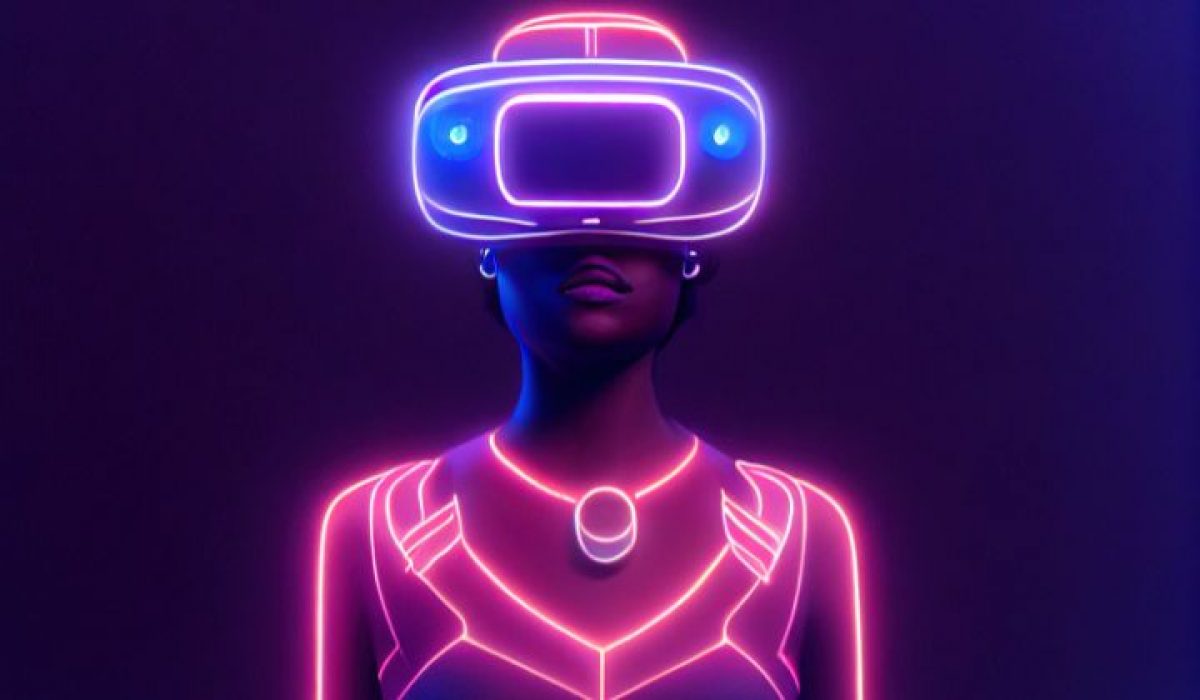This article explores the evolving landscape of virtual reality (VR), highlighting the significant trends in the industry for the current year. We delve into predictions for the future of VR, underscoring why it’s an opportune moment for businesses to seek partnerships with VR development companies.
The focus is on the current state of the immersive technology market, its application in training systems, and the potential future shaped by ongoing trends and data. This analysis aims to be a valuable reference for companies interested in leveraging immersive technology.
The year 2023 marked a remarkable phase for virtual reality. Notably, over 10.8 million VR devices were sold, and projections suggest this figure could rise to 23.8 million by 2025. The year was also characterized by widespread media coverage of renowned brands and corporations venturing into the VR sector. Given these developments, it’s anticipated that 2024 will witness even more substantial growth in the VR industry.
This article will discuss the most significant VR trends for the current year, offer future predictions, and explain why now is an ideal time for businesses to engage with VR development companies for potential collaborations.
Trend 1: AI Drives the Future of Augmented Reality
A strong relationship between augmented reality and the advancement of artificial intelligence has always existed. When compared to algorithms built by humans, AI models perform room and facial scanning tasks much more efficiently. But in 2024, AR is going a lot farther than simply relying on AI to decipher sensor readings. To round out and improve augmented reality experiences, AI is accomplishing a few key tasks:
Using AI, augmented reality has progressed beyond just analysing a person’s face to creating a realistic 3D model of their face or other object. This allows them to be utilised as an avatar or asset in a virtual world.
The ability to detect and name objects is a key component of machine vision. More than just identification, this allows for augmented reality interactions by superimposing virtual objects on top of real-world ones.
One useful feature is text recognition and translation, which allows users to quickly and easily translate text by merely pointing their camera at it.
New generative AI models, such as Chat-GPT, have recently experienced explosive growth, which bodes well for their potential application in the future of augmented reality. As an example, 3D object creation and manipulation combining generative AI and natural language processing is already a reality with tools like Spline. You can also use animations and textures.
For more detail you can watch the below video!
Trend 2: Augmented Reality Applications Cross-Platform
A large number of augmented reality experience developers aim to reach the widest potential audience. Nevertheless, a number of difficulties emerge right away:
Audiences may have a wide range of devices available to them, and various platforms have varying capabilities and restrictions.
Creating augmented reality experiences from the ground up for every platform can be a costly ordeal that necessitates specialised teams to guarantee cross-platform uniformity.
When it comes to augmented reality, cross-platform development tools just can’t hold a candle to native apps.
Apps that aren’t overly complex work best as cross-platform applications. But, developing the app natively is the way to go if it requires greater power and higher-quality features.
If you’re building an e-commerce site with a basic product preview module in augmented reality and 90% of the features are platform-agnostic, then cross-platform AR is a good choice. However, the native alternative is preferable when dealing with applications whose functionality depends on the platform or demands optimal performance. Things like augmented reality navigation and 3D scanning fall under this category.
Trend 3: Marketing in Augmented Reality
The marketing business may make use of Augmented Reality in several ways. Converting augmented reality business cards, user guides, and product demos into immersive experiences is a rather straightforward process. If you want to be noticed, this is a fantastic strategy to use.
The use of augmented reality in advertising keeps bringing in more cash for companies. Global augmented reality revenue might reach $39.8 billion in 2027, according to AR Insider.
For better understanding!
Trend 4: Advancements in AR and VR will be accelerated by 5G.
The technology will bring about a significant change in how we utilise AR/VR, as previously stated in our blog post about the effects of 5G on mobile applications.
Thanks to 5G’s lightning-fast mobile network, more data can be sent to the cloud, processed, and used to create a virtual image, all of which will improve the virtual experience that consumers get.
Even in low-bandwidth, low-power settings, the technology will improve the experience quality, allowing for a better augmented experience with less expensive devices and headgear.
Trend 5: The Arrival of Web AR
Up until recently, augmented reality could only be experienced on mobile devices. Accessing the augmented reality requires downloading and installing the mobile app. Now, though, the WebAR has emerged.
The name gives it away: this will make it easier for people to use augmented reality on the web. Their exposure to augmented reality (AR) will be consistent across devices and browsers like Chrome, Firefox, and others, lowering the barrier to entry and improving the experience overall.
If you want to learn more watch this video once!
Trend 6: Augmented Reality for Indoor and Outdoor Navigation
Immersive navigation experiences, whether inside or out, have long been a goal of inventors. Due of its immersive nature, augmented reality shows great potential as a user interface for these technologies. 3D markers and guides within the field of view or via a viewfinder allow the user to remain fully present and attentive to their environment, eliminating the need to glance down at a screen for contextual directions on a map. Since there is no universally superior approach, the next iteration of augmented reality navigation will inevitably have subtleties.
Trend 7: Virtual and Augmented Reality Provide Remote Help
AR VR trends will improve remote support and cooperation chances.
The technology will allow technicians to view real-time issues on the job site via their mobile phones or laptops. They will be able to evaluate everything and submit assets (pictures, videos, or PDFs) with appropriate comments/notes to remote places that will remain locked on the shared scene.
Check out the video below to get a better understanding of how AR/VR apps can be used for remote assistance:
Trend 8: Implementation of virtual reality (VR) as a therapeutic tool
Virtual reality (VR), augmented reality (AR), and mixed reality (MR) are revolutionising healthcare in their own unique ways.
Thanks to the integration of these three technologies, healthcare providers and doctors may now “swipe” between them all in one app. This allows professionals to enjoy the benefits of multiple use cases simultaneously while also increasing their efficiency and productivity.
Trend 9: Use of AR and VR in Education
Education is one sector that will see tremendous growth in the next years, even though VR and AR will keep permeating many other industries and business processes, such as gaming, retail, and entertainment.
Teachers will find that virtual reality technology allows them to immerse pupils in new and fascinating ways to learn. It will increase the likelihood of successfully instructing distant learners in virtual reality classrooms, ensuring that they do not lose out on the advantages of learning in a collaborative setting.
When it comes to learning on the job, however, augmented reality will enable more flexibility. They will be able to hone their abilities and get their jobs done at the same time since they will have access to the necessary information in real-time.
Trend 10: Shopping in Retail and Augmented Reality
One of the most important uses of augmented reality in retail is virtual try-on solutions. Immersive experiences are playing an increasingly important part in businesses’ efforts to improve their customers’ online shopping experiences. Retailers such as IKEA and Target have found success with the use of augmented reality to let customers visualise furniture and other items in different settings.
The technology behind virtual fitting rooms is likewise constantly evolving. Thanks to advancements in body measurement technology, online clothing shoppers now have a more tailored experience.
The latest collaboration between e.l.f. Cosmetics and Google via interactive YouTube ads is an inventive illustration of the potential of augmented reality virtual trial apps. Clicking on a makeup ad in a video will launch an augmented reality experience that lets the viewer see the products applied to their own face.
Final Words
Now that you’re up-to-date on the most talked-about VR and AR trends for the next few years, it’s time to tackle the most anticipated question: how will these technologies change the world? Can we predict where augmented and virtual reality are headed?
Augmented reality, virtual reality, and the immersive web are expected to undergo significant changes in 2024. The line between the real and virtual worlds will continue to dissolve as technology develops and becomes more widely available. These immersive technologies will change the way we use information, goods, and experiences in many fields, including medicine, education, entertainment, and commerce.




Pingback: Top AR & VR Trends to Transform E-commerce 2024